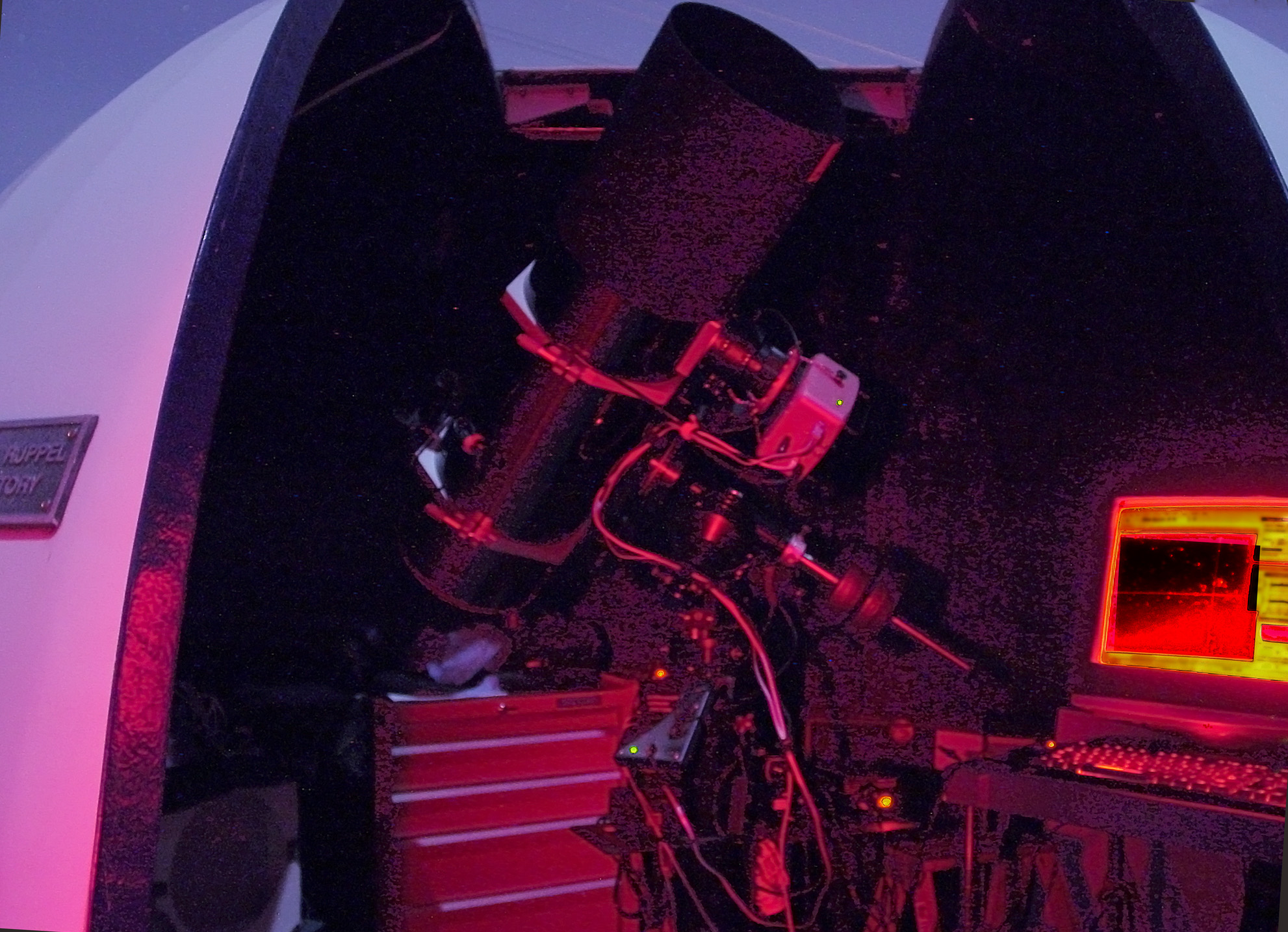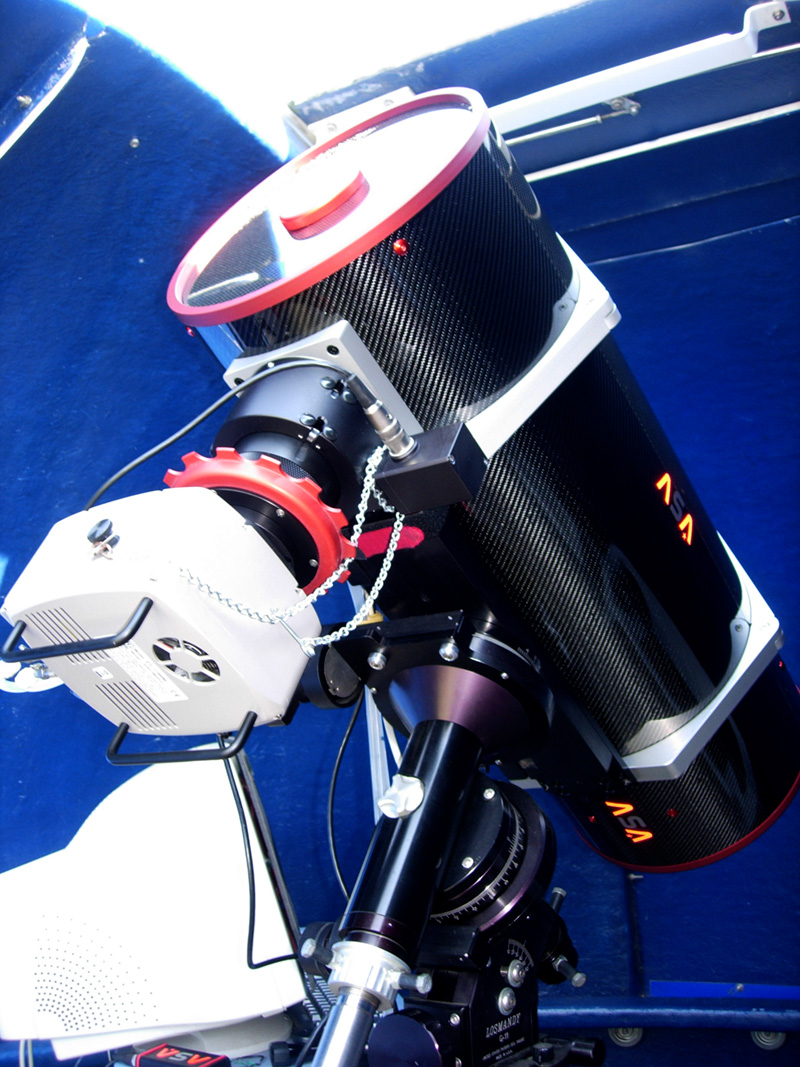Equipment and Techniques
My equipment consists of the
following:
|
|
|
|
|
At the scope
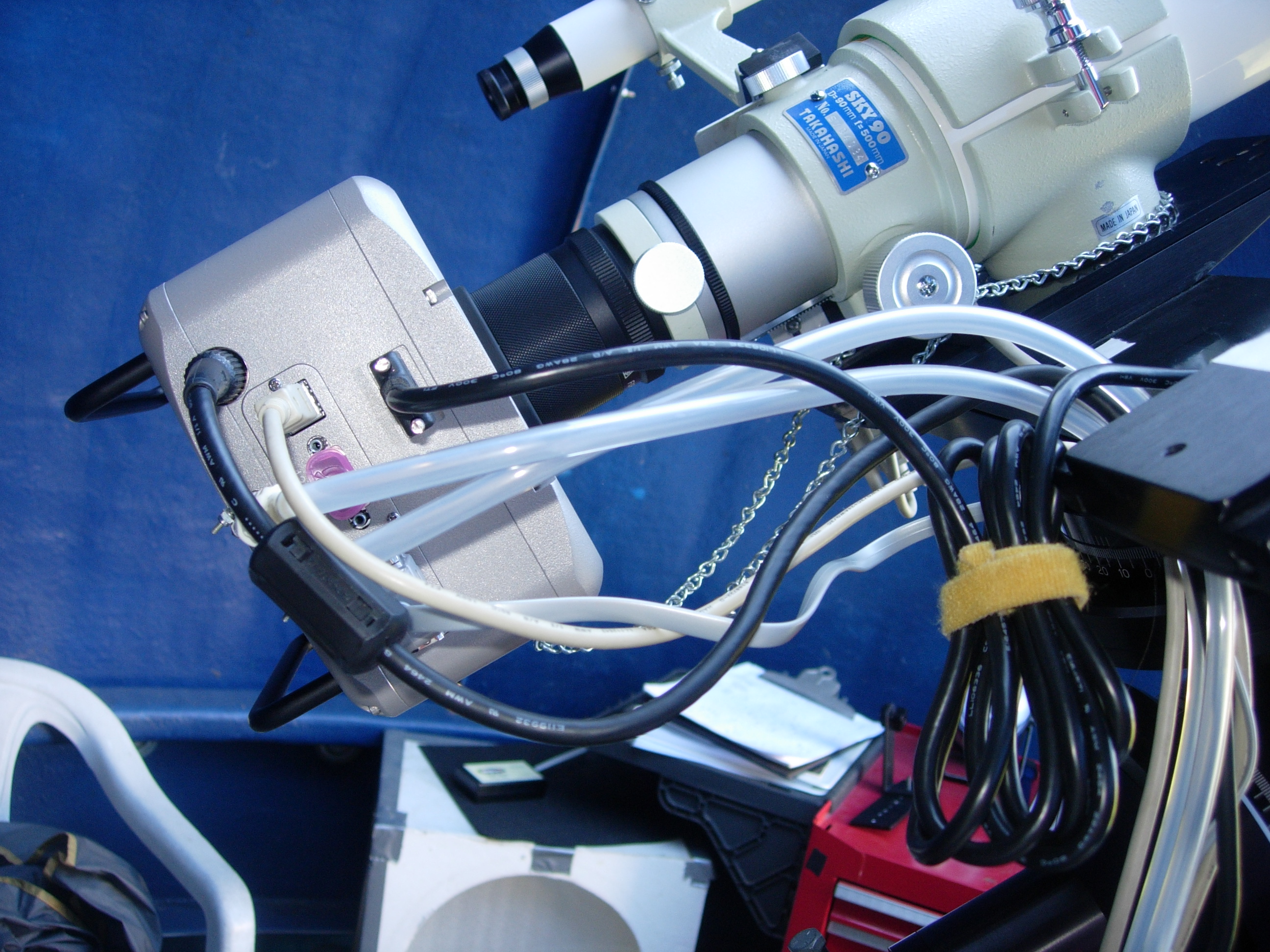
I have my scope permanently mounted so that a simple one star alignment is all that is required. The STL11000M camera requires about 10 minutes to cool to operating temperature, and this can be done while the rest of the equipment is prepared. As soon as it's dark enough, I "synchronize" on an appropriate star in the vicinity of the object to be imaged. The AP900 with V2 ASCOM driver permits multiple programs to connect to the mount. I usually connect MaximDL and SkyMap Pro. I also align the finder (a red dot unit power device) so that it is centered on the same object. The external guide head is used with a Mini-Borg 50 mm guide scope, which provides a wide field of view and very seldom fails to find a guide star.
I leave the camera attached to the scope. For imaging at f/3.75 (the native focal length of the ASA 10N) guiding can be done with either the built in guide chip or using the remote guide head. The short focal length makes guiding very tolerant. As long as the camera is not removed or rotated significantly, flats can be used for an extended period of time.
While pointing at a moderately bright star the camera is placed in the "Focus" mode. I usually focus using FocusMax or manually using the Robofocus control program. Focusmax works very nicely with the OK-3 focuser and usually produces much better focus than can be obtained manually. For the AstroSysteme Austria N10 astrograph proprietary software controls the electronic focuser. Because of the carbon fiber tube, there is very little change in focus even with significant temperature swings.
I use MaximDL to acquire images, control the mount, and the dome. It allows a great degree of automation, including sequences of color frames and luminance frames. The STL11000M is temperature regulated so that a library of darks can be made at various temperatures and used for extended periods. MaximDL also controls the guider quite well and displays a very useful graph of the guiding as it occurs to help tweak the guider for optimal results.
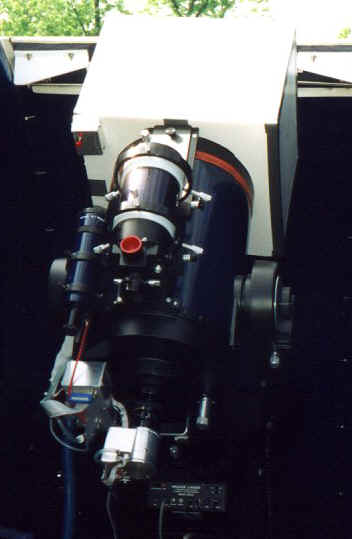 I use
either a home made
light box or dusk/dawn shots to produce flat field images. The basic idea is to make exposures of the sky
using the same optical path as for the image to be processed. This method offers a simple
and reproducible approach to flat fielding - imaging a field that roughly saturates 50%
of the range of the camera. Flats can also be made quickly at dusk or dawn,
using a simple diffuser over the aperture of the scope. I usually adjust the exposure
to achieve a count near 32000
for each filter. I take multiple flats, and then average or median combine
them. I convert the individual flats and darks
into 'Master' frames using MaximDL.
I use
either a home made
light box or dusk/dawn shots to produce flat field images. The basic idea is to make exposures of the sky
using the same optical path as for the image to be processed. This method offers a simple
and reproducible approach to flat fielding - imaging a field that roughly saturates 50%
of the range of the camera. Flats can also be made quickly at dusk or dawn,
using a simple diffuser over the aperture of the scope. I usually adjust the exposure
to achieve a count near 32000
for each filter. I take multiple flats, and then average or median combine
them. I convert the individual flats and darks
into 'Master' frames using MaximDL.
I currently do long imaging runs using CCD Commander, which can control almost all aspects of observatory/mount/scope/camera control. Images are stored on the observatory computer until the end of the imaging session. Then I copy them to my desktop via the local network. During imaging runs I use Real VNC to control the scope, camera, filter wheel and focuser remotely. Real VNC can also be run as an iPad app and this provides a great deal of freedom for remote imaging. This is especially useful when the temperature is very cold. It also allows me to do other work during long imaging runs without being in the observatory.
Image processing
The following steps are what I normally employ for processing raw
images. I use one or more of several image processing packages:
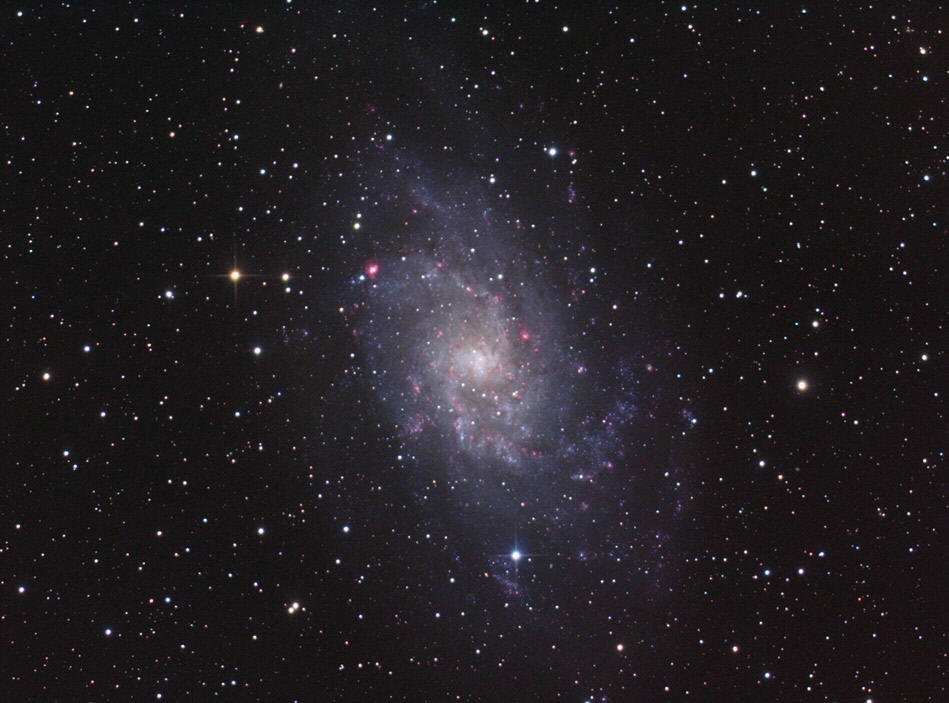
MaximDL is a very powerful program for processing monochrome and color images. I usually calibrate my images in Maxim. If there are gradients I use the tools in Maxim to clean up the master frames. I then use Maxim to align and combine the master stacks into LRGB images and save them as 16-bit TIFF files; FITS files are saved as well. The FITS files can be imported into Photoshop using the FITS Liberator plug-in. I usually balance the color images in RGB by applying weights determined from a G2V calibration star. Unfiltered luminance frames are usually stretched or processed with DDP in Maxim or AIP4Win.
Final processing is done in Adobe Photoshop CS. This provides control over levels and curves, along with layers for sophisticated image manipulation. A number of plug-ins and actions are available specifically for processing astro images in Photoshop. I usually save the 'final' image in Photoshop (PSD) format, along with a 16-bit TIFF and 8-bit JPEG version for display on my web page. The large chip in the STL11000 generates large files; I archive each month's data (calibrated frames, LRGB and intermediate images to a DVD or external hard drive.
